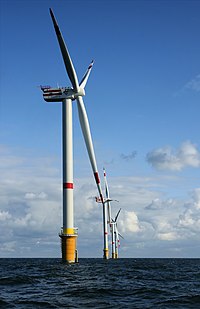
Photo from wikipedia
The performance simulation theory of low-level wind shear (LLWS) detection using an airborne coherent Doppler lidar (CDL) is shown. The simulation theory that this performance is based on is analogous… Click to show full abstract
The performance simulation theory of low-level wind shear (LLWS) detection using an airborne coherent Doppler lidar (CDL) is shown. The simulation theory that this performance is based on is analogous to the turbulence and wind shear detections with an airborne Doppler radar, as specified in the radio technical commission for aeronautics (RTCA) document (DO)-220. Prior theoretical studies of CDL regarding: 1) signal-to-noise ratio (SNR) equation; 2) the relation between SNR and wind sensing performance; and 3) atmospheric parameters are fully utilized. An example simulation result under a practical condition satisfies the requirements to specify minimum operational performance standards (MOPS) in DO-220. Further, the simulation result is well aligned with past experimental results on the detectable range of LLWS. The results of this study can be utilized to establish MOPS for LLWS detections using an airborne CDL in the future.
Journal Title: IEEE Transactions on Geoscience and Remote Sensing
Year Published: 2023
Link to full text (if available)
Share on Social Media: Sign Up to like & get
recommendations!